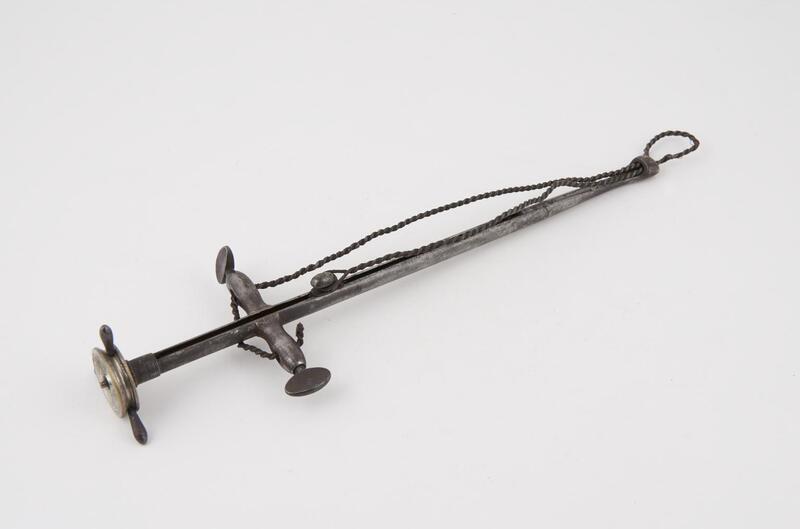Tools
Victorian Medical Tools
During the Victorian period, spanning from around 1837 till 1901, advancements in medical tools and instruments underwent a transformation, that reflects the progress of industry in the era. The tools were a marked departure from the prior centuries that were driven by the technological advances and professionalization of medicines. One of the distinguishing factors of this was the pace at which innovation and development happened. The Victorian period was witness to tools that made revelations that can still be seen in modern medicine. They can also be seen as marked indicators not only for a change of engineering but as a shift in how medicine was practiced. The tools on this page only represent a fraction of the advancements made throughout the period.
During the period industrialization caused an increase in machinery, which caused a great evolution in these designs. This caused a shift from crude tools to tools that were more refined in their purpose. Tools that could be specialized in their unique purpose, chains that were made with the idea of surgery, spring-loaded tools that were made for dermatology, and developments in tools for cancer removal. These transitions from simple tools to intricate machine-made tools are reflective of the societal shifts towards precision in other fields.
The legacy of Victorian medical tools is still felt even int eh the modern day. Many of the principles in technology are still in modern medical tools. This relentless pursuit of innovation is what characterized the period in its take on medical tools.
The Brass Scarifcator is a tool that was developed for bloodletting. This tool was used in the field of dermatology, along with other conditions. The brass device is spring-loaded with a trigger, when pressed the device releases several blades into the skin. The tools use principles from prior medical eras but with innovation in their precision and implementation. The tool comes with several blades attached to three poles that are razor-sharp, these are ejected through slots in the bottom of the device. While this method of bloodletting is not used today, the tool was an innovation of its field allowing for more precision.
Bernhard Heine's Osteotome is a tool that was made for childbirth, and it is now known as the first chainsaw. While not as widely used in its practice, is a great example of innovation within the medical industry. This hand-operated device was used for symphysiotomy, a procedure where the tools were used to cut into the cartilage of the pelvic bone to widen it to allow for more room for childbirth. While it was used later on for other procedures where the cutting of bone was needed, as before these tools would create more shock from the impact of their use leading to trauma. We can see traces of the Osteotome in modern medical instruments that now use motors to power them rather than a chain.
The tongue écraseur, is a good example of a tool that looks barbaric, like the prior tool, but it is one where the innovation leads to better practices and results. It is not as influential as the other tools on the list, but it is a good way of showing how even with innovation, procedures do not always make life easier for their subject. The tools were used in the removal of cancerous tongues to prevent its spread. Using a chain to slowly remove the tongue, though it is particularly gruesome this method was preferred over using just a scalpel. It allowed for more precision and cleaner cuts allowing for more successful procedures.
This Bossi-type uterine dilator was developed for the use of inducing childbirth. The tool has mechanical parts that would cause the end of its apparatus to splay out to force the cervix to dilate. The mechanical nature of the tool allowed practitioners to use spinning gear in the back to apply the force needed. The tool was innovative for its time, though the tool would see no use today, as it would be most likely done through a tool that would balloon, as is less likely to cause harm during childbirth, unlike this dilator.
References
“Bossi Type Uterine Dilator: Science Museum Group Collection.” Bossi type uterine dilator | Science Museum Group. Accessed March 17, 2024. https://collection.sciencemuseumgroup.org.uk/objects/co163835/bossi-type-uterine-dilator-uterine-dilator.
Coppinger, Charles. “A New Method Of Applying The Écraseur For The Removal Of The Tongue.” The British Medical Journal 2, no. 927 (1878): 513–513. http://www.jstor.org/stable/25248257.
“Cripps-Type Tongue Écraseur, London, England, 1870-1922: Science Museum Group Collection.” Cripps-type tongue écraseur, London, England, 1870-1922 | Science Museum Group. Accessed March 16, 2024. https://collection.sciencemuseumgroup.org.uk/objects/co165167/cripps-type-tongue-ecraseur-london-england-1870-1922-tongue-ecraseur.
Guthrie, Brooke. “What’s inside That Thing?: Scarificators and Medical Instrument Design.” The Devil’s Tale, April 23, 2020. https://blogs.library.duke.edu/rubenstein/2020/04/27/scarificators-design-of-medical-instruments/.
Morris, Malcolm. “On Scarification As A New Remedy In Skin-Disease.” The British Medical Journal 2, no. 1023 (1880): 202–3. http://www.jstor.org/stable/25254536.
“Scarificator.” From the Collection. Accessed March 16, 2024. https://artefact.museumofhealthcare.ca/?p=193.
Skippen, M, J Kirkup, R M Maxton, and S W McDonald. “The Chain Saw - A Scottish Invention.” Scottish Medical Journal 49, no. 2 (May 2004): 72–75. https://doi.org/10.1177/003693300404900218.
Walker, Monica. “Childbirth in the Victorian Era: The Old Operating Theatre Museum.” The Old Operating Theatre, June 9, 2022. https://oldoperatingtheatre.com/childbirth-in-the-victorian-era-in-three-chapters/.



